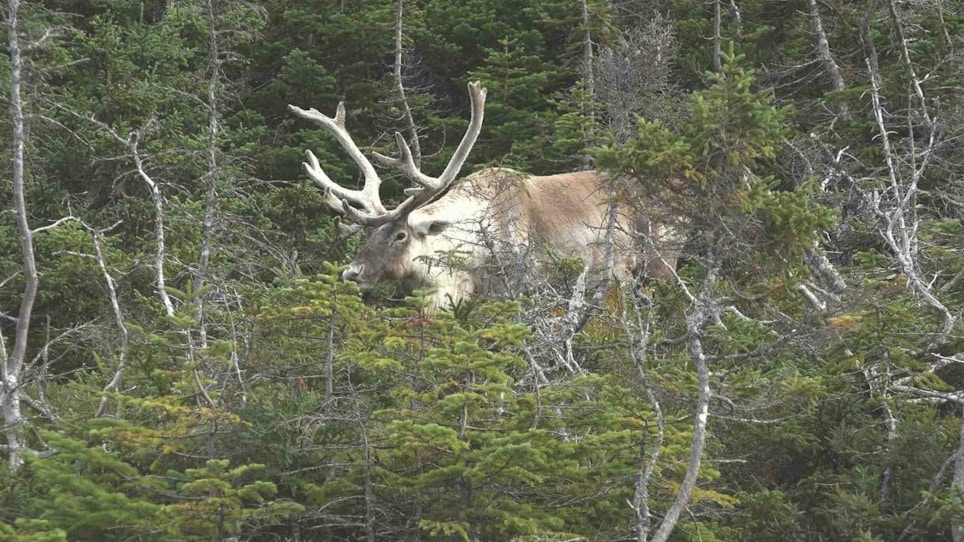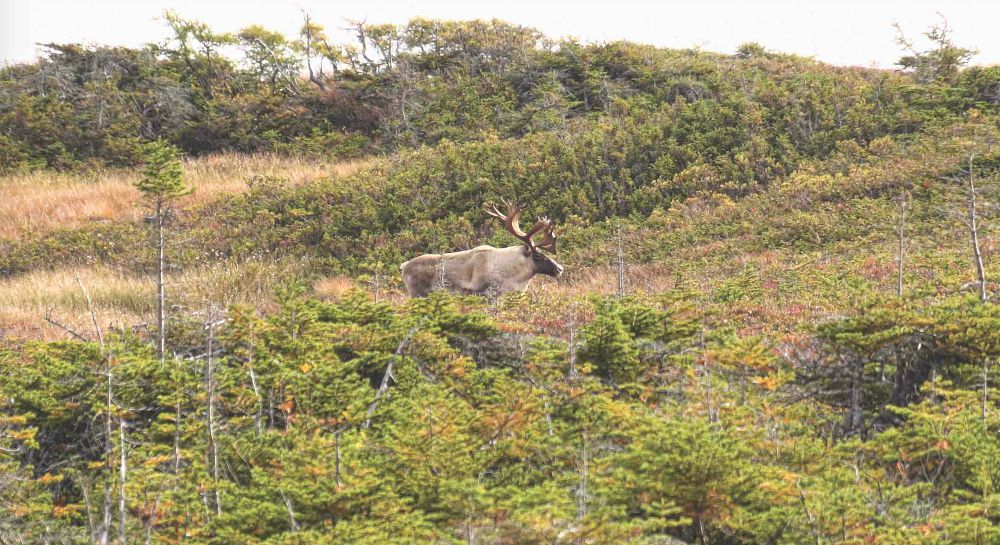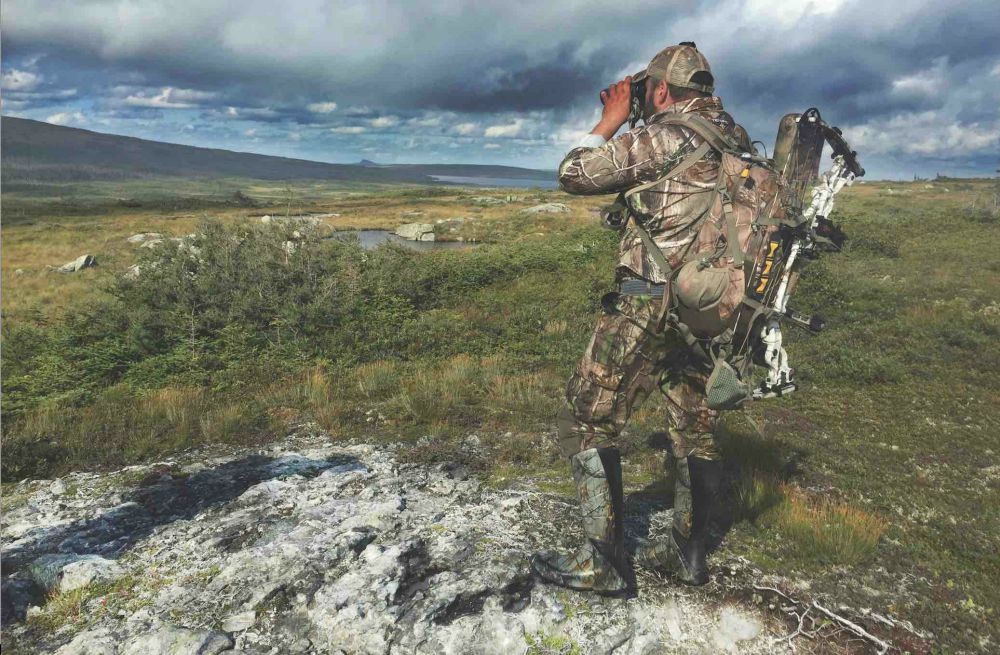The anticipation of our woodland caribou hunt had been building for months, and as the plane swung wide and made its descent into Newfoundland, the culmination of the preparation and planning hit my wife and I with a jolt. This bowhunt marks our 10th year airing hunts with Bob Efford of Efford’s Hunting Adventures in Newfoundland. Each time Vicki and I have been here, we realize how blessed we are to see plenty of game and have excellent opportunities to harvest a trophy animal. Whether we’ve been after moose, caribou, or both, Bob always puts us on animals, and we have a great time hunting the eastern portions of this magnificent Canadian province.
This hunt would turn out to be no different, with one exception. Normally, the weather in these Maritime provinces is challenging; wind, rain and more wind and rain seem the norm. Hunting in early September, of course, compounds this risk. But I’ve always wanted a woodland caribou in velvet, so my window of opportunity was limited. I knew that to get a full-velvet bull, I’d have only a few weeks at the opening of the season to get it done.
On this particular hunt, a hurricane was barreling up the East Coast, and if it stayed on track, threatened to be on top of us in a matter of days. With the weather working against us, we kept our confidence high and put our trust in our outfitter.
After boarding the float plane that would take us to our remote camp in the interior of Newfoundland, we gave civilization one last glance, took a breath and hoped for the best. The landscape of Newfoundland from the float plane never gets old. The rolling hills and bogs that seem to dominate the landscape are some of God’s greatest creations.
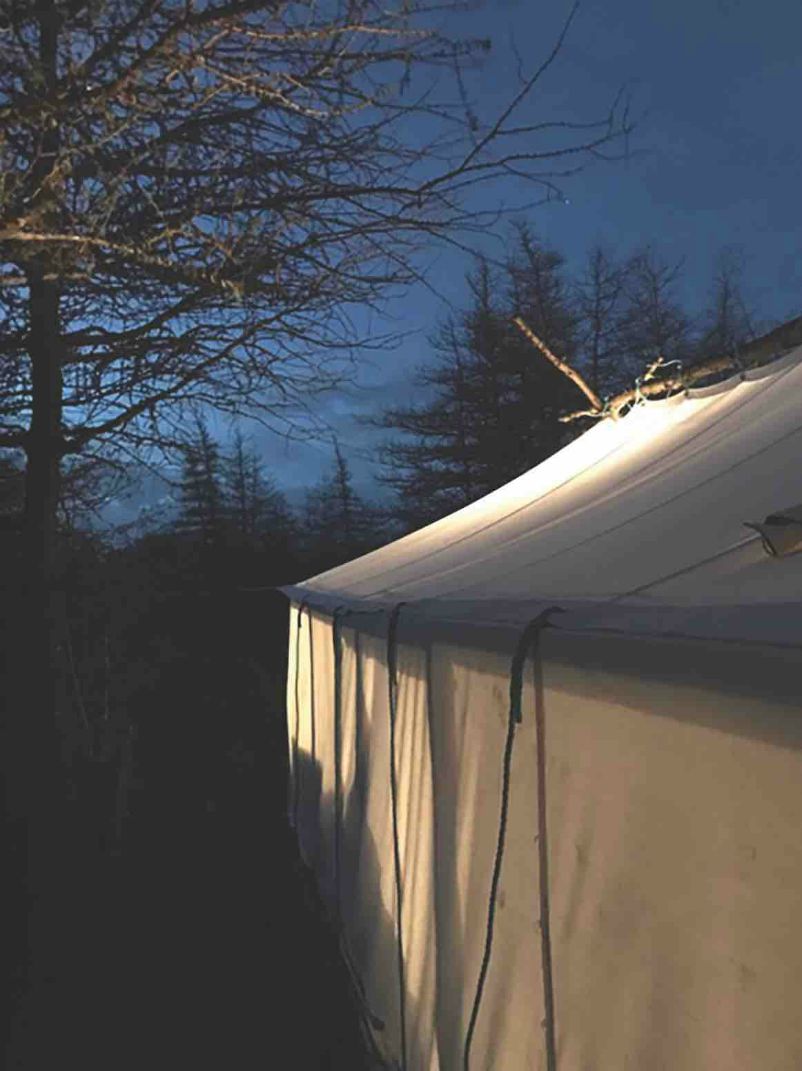 Woodland Caribou Base Camp
Woodland Caribou Base Camp
As the float plane made its descent onto some unnamed lake, the water sprayed off the pontoons as we glided toward shore. The silence of the north country captivates me each time I return to this special part of the country, and it’s one of the main reasons I go back as often as I can. Camp in Newfoundland is as luxurious as it gets on the Canadian tundra. Like many backcountry hunts in remote places across the globe, canvas wall tents provide everything we need to keep us safe and dry. The tents sport soft cots, a warm stove and all the other conveniences of home . . . kinda.
Extreme Weather Looms
In this part of Canada, the weather is as varied as the game — even under normal conditions. Bluebird mornings will often turn to pouring rain by lunch. Having the right gear is essential to having a good hunt. Dressing in layers, waterproof rain wear and knee-high rubber boots are a must when hunting Newfoundland. Comfortable packs that will carry your extra gear and your bow for those long stalks are also essential. Gone are the days of lugging your bow over your shoulder for mile after mile. Vicki and I just strap our rigs on our pack and then head off, which makes the walking and stalking more comfortable and effective.
On this hunt, it was obvious the weather was changing faster than we have grown accustomed to here in Newfoundland. As the storm made its way up from the U.S., we continued our hunt as usual, trying to get weather updates when we could. We were determined to hunt as long as possible, and not quit unless Bob deemed the adventure unsafe. This is where having a savvy outfitter/guide who is familiar with the area pays off in spades. We were able to focus on the hunt and put our complete trust and safety in Bob.
The Woodland Caribou Subspecies
The woodland caribou we were pursuing is the largest bodied of the caribou subspecies with unique antlers. Typically, these animals have large frontal, or bez points, and the antlers are usually darker in color than the antlers of other subspecies. The main beams are not as long and impressive as their cousin, the Quebec-Labrador caribou, but they make up for it in coloration and mass. Woodland caribou hides are usually darker in color, with a smaller mane than some of the other subspecies. And unlike their cousins, woodland caribou are more sedentary, tending to remain in small groups. They also don’t migrate per se; instead, they prefer to remain within a 35- to 100-mile area. This may seem large, but by caribou standards is actually quite small. Other subspecies migrate thousands of miles annually.
Nonresidents of Canada wishing to hunt woodland caribou are restricted to the remote area of Newfoundland, while the range of the woodland caribou extends west into Quebec, Ontario and, to a lesser degree, north into Labrador. Hunting by nonresidents isn’t allowed in these locations. Those wanting to add a woodland caribou to their trophy room will have to travel to Newfoundland.
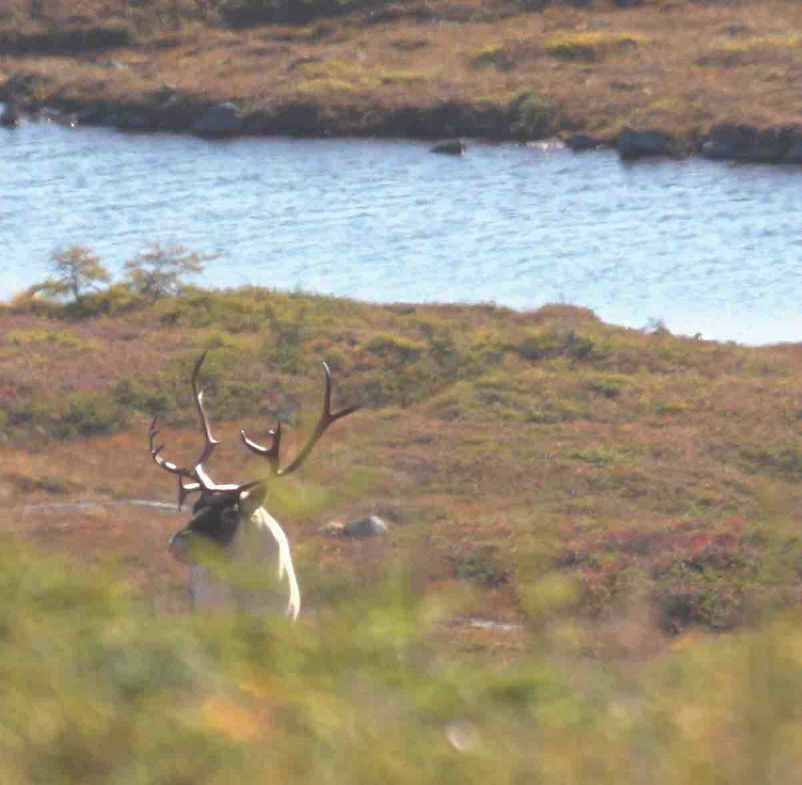 Difficult Terrain
Difficult Terrain
Camps are usually situated near good vantage points we can access easily. There are usually several viewing locations available. If the wind is wrong for glassing from one spot, we take a boat across the lake to another vantage point where we can see as much country as possible. It’s common to see for several miles in each direction. That said, locating a group of caribou in this vast country can be challenging. Good optics are paramount and save your legs. Finding the animals from several miles away and determining if they are worth stalking is a huge ingredient to overall success.
We’d start each day on a given vantage point, and once caribou were located, we’d begin our hike. The terrain is difficult, and many days are spent trudging through spongy bogs and nasty brush.
I will say that every step you take in Newfoundland seems to sink your foot several inches into the ground. It can be very physically demanding, and physical hunt preparation should be highly considered.
Caribou are largely known as a tundra species, and this is true of most of the subspecies that roam through the North. But the woodland caribou of Newfoundland spend very little time in the open tundra, preferring to call the wooded brush home. Even with excellent optics, finding them in that brush can be difficult, and a lot of time is spent searching for animals. Much of the Newfoundland brush is impenetrable. In fact, some of the brush is so thick that it can entrap you for hours while you fight to get out of the brambles.
With Time Ticking Away . . .
A few days into our hunt, our guide suggested that we move a couple miles in a different direction to glass. Shortly after reaching the top of a ridge, we spotted — in the distant landscape — a good-sized mature bull. A plan was quickly put together, and the stalk was on. With the weather changing fast, we knew this was likely to be our last full day of hunting. And years of experience have taught us that you cannot catch up to moving caribou; you must intercept them. Our guide, along with me behind the bow and Vicki running the camera, began our approach from the side, being sure to keep the wind in our favor.
Desperately we tried to get close, but the wise old brute just kept moving away, and it was soon obvious that we couldn’t catch up. Feeling dejected at the lost opportunity, we pushed the failed stalk to the back of our minds and kept trucking along. A few minutes later, we were blessed to spot another big bull walking along the shore of a lake. The wind was in our favor, and the hunt was back on. We quickly studied the shoreline and made the decision to move fast ahead of him and then settle in a narrow point of the lake, hoping he’d continue along the shoreline.
We settled in near a bush as close to the shoreline as we dared to get. Watching the bull meander along the shoreline, wandering this way and that, was torture. There were countless directions the bull could go, and he seemed not at all in a hurry to choose any particular route.
Finally, the bull set his gaze in our direction and started coming slowly but surely.
With Vicki running the camera, I grabbed my rangefinder and started painting different rocks and clumps of grass. I was hoping for a good quartering-away shot, and the bull must have read the script. He quartered away at a distance of 52 yards and I dialed my single TruGlo pin to the exact yardage and settled in. Concentrating on the release, I slowly applied pressure to the trigger, and my Hoyt sent my Beman arrow on its way. I watched with elation as my arrow buried up to the fletching into the bull’s chest.
As we made our way to the big bull, thoughts of the adventure raced through my mind — from the oncoming hurricane, to the long travel, to the miles of walking through bogs. But when I finally placed my hands on one of North America’s greatest trophies, those thoughts quickly disappeared.
If you dream of hunting caribou, you should strongly consider the woodland subspecies along the eastern shore of Newfoundland. You won’t regret it.
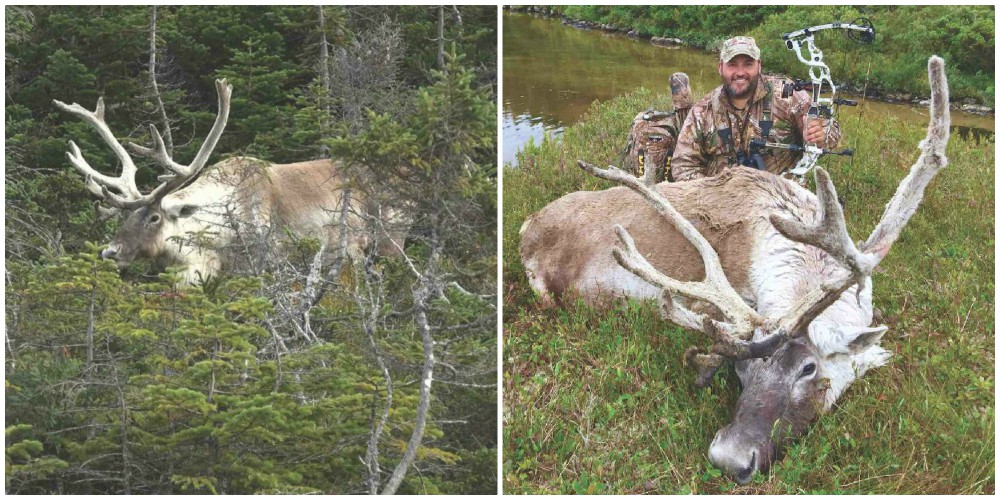
A magnificent species, the woodland caribou, unlike other caribou species, prefer wooded areas, making them difficult to locate. This bull was spotted from a distance, and the team was able to plan an ambush.
Story and photos by Ralph Cianciarulo and Pete Rogers
What’s New in Archery Adventures:
Extreme Pursuit: Bowhunting Desert Bighorn Sheep
Africa! On Safari With Camera and Compound Bow
Why You Should Hunt Axis Deer Year-Round With a Crossbow
